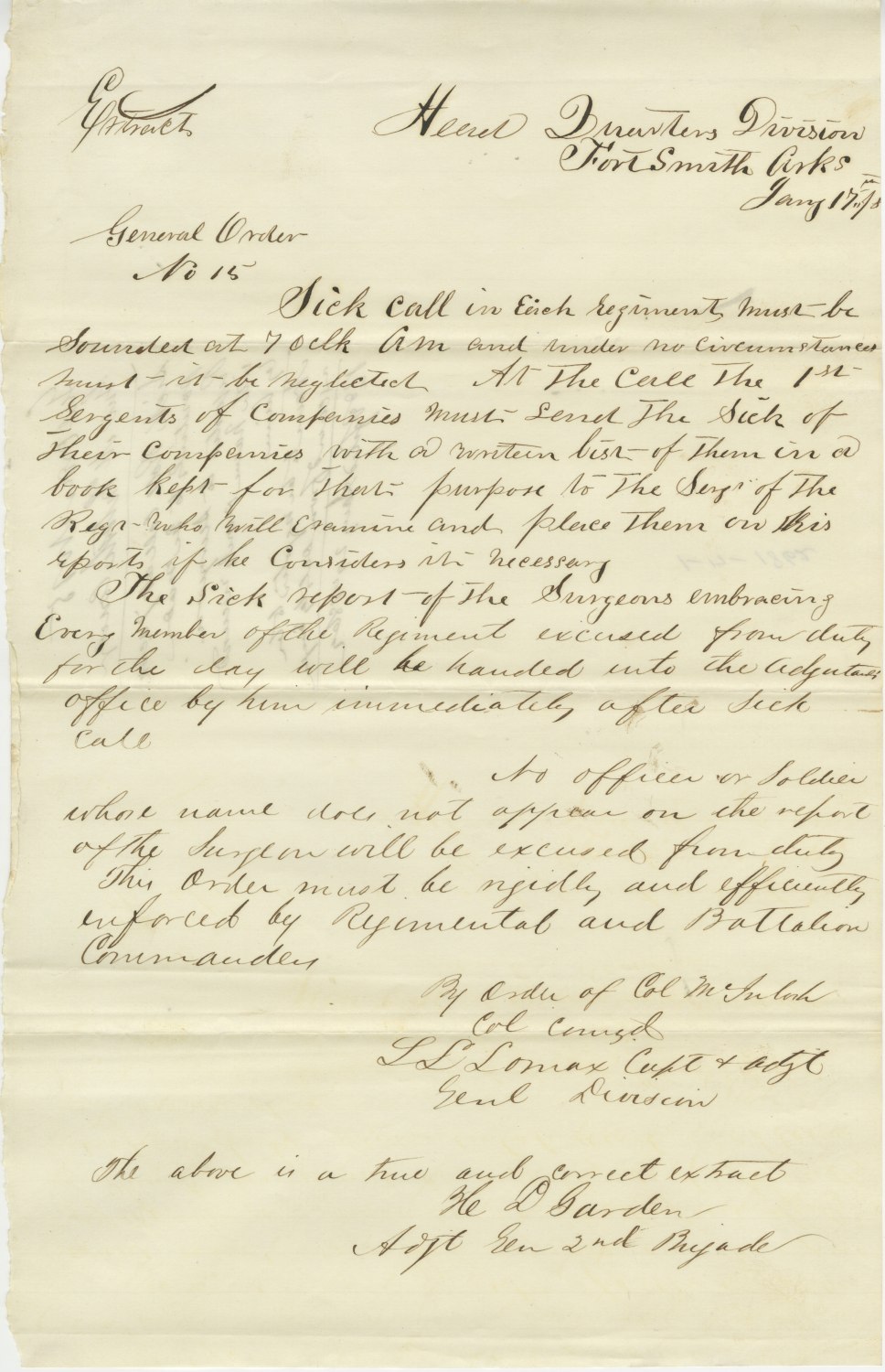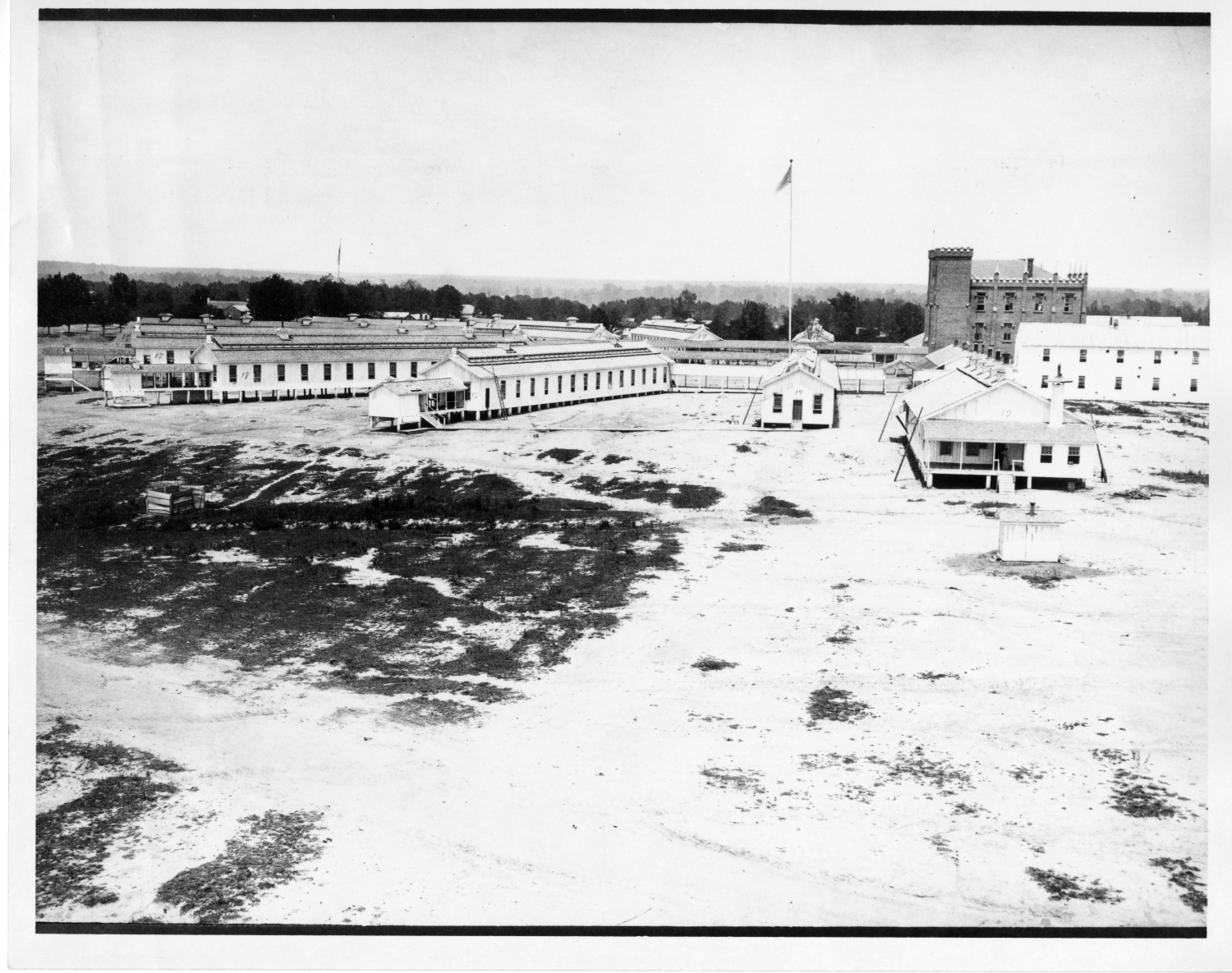Civil War and Medicine
Introduction
Medical sciences and medical education in the United States shortly before the Civil War were very different from what they are today. Most doctors were poorly trained. It was not unusual for a doctor to practice after receiving only several months of medical training. Particularly in smaller towns and in rural areas, doctors did not have any formal medical education at all. Furthermore, American medical schools did not keep up with their European counterparts. If an American wanted to gain comprehensive medical education aligned with the most recent findings in medical sciences, they usually traveled to Europe and studied at European medical universities.
In the mid-19th century, even the best-trained doctors did not know what we know today. No correct theories of disease or germ theory existed yet, and doctors were guessing rather than knew what was causing disease. Consequently, their methods of treating patients were not what doctors today consider suitable and effective. However, several important medical developments were already known at the time. Perhaps the most important in the context of the Civil War was using opiates, or natural substances that interact with the central nervous system, to ease the pain. However, doctors did not know at the time that while helping with pain, opiates are also very addictive and can cause extreme harm to a patient.
Because of these developments, medical care during the Civil War was limited. Doctors tended to soldiers who were already sick, in pain, or wounded but did not offer any solutions to prevent disease. Crowded and unsanitary conditions in military barracks contributed to the rapid transfer of contagious diseases, e.g. measles, yellow fever, cholera, or typhoid. Poor diet and polluted water commonly caused gastrointestinal (digestive) disorders. Amputation, which typically meant removing one’s limb, was a major method of addressing battlefield wounds. Hospitals were built quickly, haphazardly, and without proper accommodations. Doctors, many of whom were young and inexperienced, worked long shifts without much rest. Two out of three Civil War deaths occurred from disease rather than as a result of a battle.
In this activity, you will examine a Civil War-period military order concerning “a sick call” and a photo showing hospitals that cared for the sick and wounded during the Civil War.
Activity Questions
- What is a sick call in the military? If you do not know, try to define this term from the context provided in this document. If you are still not sure, look it up.
- What were the rules of a sick call for the Eighth Regiment described in this document?
- Who could be “excused from duty” (i.e., released from their military responsibilities) every day?
- Check again what time a sick call needed to be conducted every day. What kind of problems could that cause for soldiers? For example, what likely happened to those soldiers who got sick after a daily report was submitted?
- When and where was this photo taken? See the photo caption for more information.
- What are the buildings in the photo? Describe the buildings.
- Do the buildings in this photo look like hospitals today?
- Why do you think there are several separate buildings and not one large hospital building in the photo?
- Find images of other hospitals from the Civil War era (many are available online). Does the hospital complex in this photo look like a typical or unusual Civil War-era medical structure?
- Look up the area where this photo was taken today. Does it look the same or different? Are the buildings seen in this photo still there? If not, why?
Primary Sources
To learn more about the primary sources featured in the activities above, click the following links:
Arkansas Social Studies Standards
Social Studies (US History 1800-1900), Grades 8
- Strand: Era 5: Civil War and Reconstruction 1850-1877
- Content Standard 2: Students will analyze the American Civil War and Reconstruction and their effects on the social, economic, and political development of America.
- Era5.2.8.3 Analyze social and economic effects of the Civil War on America
- Era5.2.8.4 Analyze the historical significance of selected Civil War battles, events, and people
Arkansas History, Grades 7 – 8
- Strand: History
- Content Standard 7: Students will examine the impact of historical events and people on the development of Arkansas
- H.7.AH.7-8.3 Analyze the historical significance of selected Civil War battles, events, and people in various regions of Arkansas
Arkansas History, Grades 9 – 12
- Strand: Era 3: Civil War Through the Gilded Age 1861-1900
- Content Standard 3: Students will analyze factors that influenced the perspectives of Arkansans from the Civil War through the Gilded Age.
- Era3.3.AH.9-12.2 Research social, economic, and political effects of the Civil War on citizens in various regions from multiple perspectives
- Era3.3.AH.9-12.3 Analyze the historical significance of selected Civil War battles, events, and people in various regions of Arkansas
More Information
- https://encyclopediaofarkansas.net/entries/civil-war-medicine-8628/
- https://encyclopediaofarkansas.net/entries/hospitals-12614/
- https://encyclopediaofarkansas.net/entries/civil-war-through-reconstruction-1861-through-1874-388/
- https://www.medicalmuseum.mil/index.cfm?p=visit.exhibits.past.nationswounds.page_01
Downloadable Guides and Handouts
We encourage K-12 educators to use History Alive: Virtually! in a way that will best match their classroom needs. The “Exercise” handout includes a complete exercise as featured on this website, the “Primary Sources” handout includes only primary sources used in the exercise, and the “Questions” handout includes analytical questions from the exercise but is editable and can be easily changed to best match students’ needs.
Civil War and Medicine – Exercises



